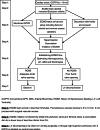ECPR-extracorporeal cardiopulmonary resuscitation
- PMID: 33432257
- PMCID: PMC7787697
- DOI: 10.1007/s12055-020-01072-2
ECPR-extracorporeal cardiopulmonary resuscitation
Abstract
Extracorporeal cardiopulmonary resuscitation (ECPR) is a salvage procedure in which extracorporeal membrane oxygenation (ECMO) is initiated emergently on patients who have had cardiac arrest (CA) and on whom the conventional cardiopulmonary resuscitation (CCPR) has failed. Awareness and usage of ECPR are increasing all over the world. Significant advancements have taken place in the ECPR initiation techniques, in its device and in its post-procedure care. ECPR is a team work requiring multidisciplinary experts, highly skilled health care workers and adequate infrastructure with appropriate devices. Perfect coordination and communication among team members play a vital role in the outcome of the ECPR patients. Ethical, legal and financial issues need to be considered before initiation of ECPR and while withdrawing the support when the ECPR is futile. Numerous studies about ECPR are being published more frequently in the last few years. Hence, keeping updated about the ECPR is very important for proper selection of cases and its management. This article reviews various aspects of ECPR and relevant literature to date.
Keywords: CCPR; ECMO; ECPR; Ethics; Hypothermia.
© Indian Association of Cardiovascular-Thoracic Surgeons 2021.
Conflict of interest statement
Conflict of interestNil.
Figures

Similar articles
-
Comparison of extracorporeal and conventional cardiopulmonary resuscitation: a retrospective propensity score matched study.Crit Care. 2019 Jan 28;23(1):27. doi: 10.1186/s13054-019-2320-1. Crit Care. 2019. PMID: 30691512 Free PMC article.
-
An optimal transition time to extracorporeal cardiopulmonary resuscitation for predicting good neurological outcome in patients with out-of-hospital cardiac arrest: a propensity-matched study.Crit Care. 2014 Sep 26;18(5):535. doi: 10.1186/s13054-014-0535-8. Crit Care. 2014. PMID: 25255842 Free PMC article.
-
Extracorporeal membrane oxygenation mitigates myocardial injury and improves survival in porcine model of ventricular fibrillation cardiac arrest.Scand J Trauma Resusc Emerg Med. 2019 Aug 28;27(1):82. doi: 10.1186/s13049-019-0653-z. Scand J Trauma Resusc Emerg Med. 2019. PMID: 31462264 Free PMC article.
-
Comparing extracorporeal cardiopulmonary resuscitation with conventional cardiopulmonary resuscitation: A meta-analysis.Resuscitation. 2016 Jun;103:106-116. doi: 10.1016/j.resuscitation.2016.01.019. Epub 2016 Feb 2. Resuscitation. 2016. PMID: 26851058 Review.
-
[Extracorporeal cardiopulmonary resuscitation (eCPR)].Med Klin Intensivmed Notfmed. 2022 Oct;117(7):500-509. doi: 10.1007/s00063-021-00796-2. Epub 2021 Apr 9. Med Klin Intensivmed Notfmed. 2022. PMID: 33835193 Review. German.
Cited by
-
Successful Prehospital Extracorporeal Cardiopulmonary Resuscitation: A Comprehensive Case Report and Analysis of the Current Experience and Knowledge.Cureus. 2023 Dec 5;15(12):e49975. doi: 10.7759/cureus.49975. eCollection 2023 Dec. Cureus. 2023. PMID: 38179384 Free PMC article.
-
Amniotic fluid embolism: A case-series.Obstet Med. 2025 Mar 21:1753495X251326125. doi: 10.1177/1753495X251326125. Online ahead of print. Obstet Med. 2025. PMID: 40129689 Free PMC article.
-
Impact of extracorporeal membrane oxygenation treatments on acquired von Willebrand syndrome in patients with out-of-hospital cardiac arrest: a retrospective observational study.Thromb J. 2024 May 31;22(1):46. doi: 10.1186/s12959-024-00617-4. Thromb J. 2024. PMID: 38822325 Free PMC article.
-
Prognostic effects of cardiopulmonary resuscitation (CPR) start time and the interval between CPR to extracorporeal cardiopulmonary resuscitation (ECPR) on patient outcomes under extracorporeal membrane oxygenation (ECMO): a single-center, retrospective observational study.BMC Emerg Med. 2024 Mar 5;24(1):36. doi: 10.1186/s12873-023-00905-8. BMC Emerg Med. 2024. PMID: 38438853 Free PMC article.
-
Implementing an intelligent diagnosis and treatment system for in-hospital cardiac arrest in the Utstein style: a multi-center case study.J Transl Med. 2024 Nov 4;22(1):996. doi: 10.1186/s12967-024-05792-6. J Transl Med. 2024. PMID: 39497163 Free PMC article.
References
-
- Belohlavek J, Mlcek M, Huptych M, et al. Coronary versus carotid blood flow and coronary perfusion pressure in a pig model of prolonged cardiac arrest treated by different modes of venoarterial ECMO and intraaortic balloon counterpulsation. Crit Care. 2012;16:R50. doi: 10.1186/cc11254. - DOI - PMC - PubMed
-
- Duff JP, Topjian CAA, Berg MD, et al. AHA focused update: 2019 American Heart Association focused update on pediatric advanced life support: an update to the American Heart Association guidelines for cardiopulmonary resuscitation and emergency cardiovascular care. Circulation. 2019;140:e904–e914. doi: 10.1161/CIR.0000000000000731. - DOI - PubMed
-
- Panchal AR, Berg CKM, Hirsch KG, et al. AHA focused update: 2019 American Heart Association focused update on advanced cardiovascular life support: use of advanced airways, vasopressors, and extracorporeal cardiopulmonary resuscitation during cardiac arrest: an update to the American Heart Association guidelines for cardiopulmonary resuscitation and emergency cardiovascular care. Circulation. 2019;140:e881–e894. doi: 10.1161/CIR.0000000000000732. - DOI - PubMed
-
- Mattox KL, Beall AC Jr. Resusctation of the moribund patient using portable cardiopulmonary bypass. Ann Thorac Surg. 1976;22 436–442. - PubMed
LinkOut - more resources
Full Text Sources
Other Literature Sources
